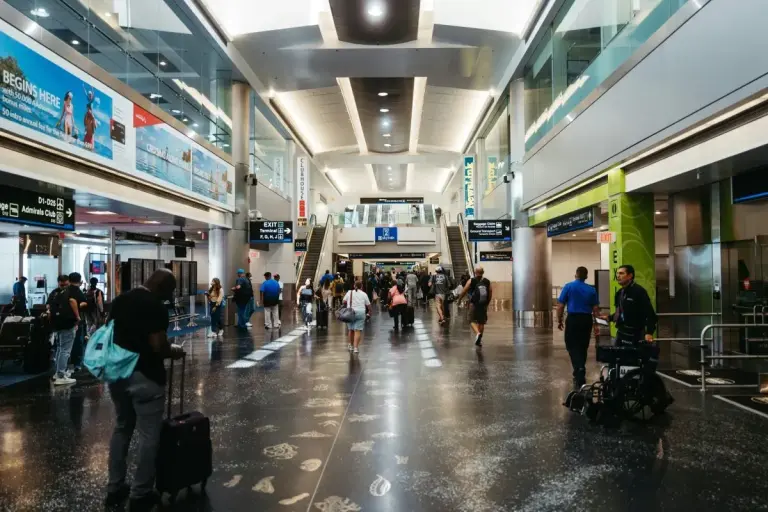Major American airports are experiencing widespread flight delays and cancellations as a historic government shutdown creates a critical shortage of air traffic controllers. Transportation Secretary Sean Duffy announced a mandatory 10 percent reduction in flight capacity at 40 of the nation’s largest airports starting this Friday. The unprecedented capacity cut, ordered by the Federal Aviation Administration, aims to manage safety risks after more than 2,000 controllers left their posts following a month without pay.
This staffing crisis mirrors the plight of approximately 700,000 federal employees affected by the budget impasse that has triggered the longest government shutdown in US history. The affected airports are primarily major international hubs, including New York’s John F. Kennedy, New Jersey’s Newark, Chicago’s O’Hare International, and Washington’s Ronald Reagan. Travelers at these locations now face a perfect storm of uncertainty and frustration.
Traveler Anxiety Mounts at National Airports
At Washington Reagan National Airport, the human impact of the disruption was palpable. Cristal, a traveler headed to Dallas, Texas, expressed deep concern about missing her connecting flight due to mounting delays. She had already changed her second flight in a desperate attempt to outrun the chaos. Her fears of being stranded at the airport grew with each passing minute.
“I changed my second flight because I did not know if I was going to arrive on time, and even so I think I will be stuck at the airport because of the delays,” she lamented. [Translated from Spanish]
Lauren Smith, a journalist from New York, found herself in a similar bind. She traveled to Washington for a work conference but now needs to return immediately to New York City. Her urgency stems from a critical commitment to her son. She must pick him up from school and take him to an important medical appointment, a responsibility that now hangs in the balance.
“If my flight is delayed I am going to be disappointed on many levels. I have made great professional sacrifices to be there for my son today,” she stated. [Translated from Spanish]
The immediate disruptions are already causing significant hardship. For students Lexi and Cloey, their flight to Florida was delayed by an hour. Their larger worry, however, is that these issues will escalate and ruin their Thanksgiving travel plans later this month. They echoed a sentiment shared by many across the nation’s terminals, anticipating that the situation will only worsen.
Broader Economic and Political Repercussions
The ripple effects extend far beyond airport terminals. The shutdown has temporarily closed many popular Washington landmarks, disappointing tourists who planned visits. Tiffany, traveling with her husband and four-year-old son, expressed her family’s disappointment. Their vacation plans were upended by the political stalemate, leaving them unable to experience the nation’s capital fully.
“We wanted to go to the zoo and the Smithsonian museum, but it could not be,” said Tiffany. [Translated from Spanish]
Some passengers see the travel chaos as a potential catalyst for political resolution. Traveler Manny believes the pressure exerted by the absent air traffic controller workforce could force Republicans and Democrats in Congress to reach a budget agreement. He views their absence as a form of necessary protest to break the legislative deadlock.
“They have to stand up and offer resistance across the country,” he said. [Translated from Spanish]
This strategy has precedent. During the last government shutdown in 2018 under President Trump’s first term, rising absenteeism among air traffic controllers, which began to paralyze the nation’s air traffic, was instrumental in forcing an end to the impasse. History appears to be repeating itself as the current aviation crisis deepens, placing immense pressure on lawmakers to find a solution before the entire system grinds to a halt.



